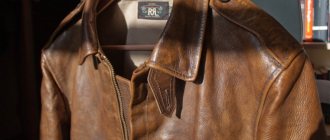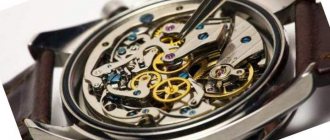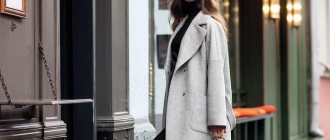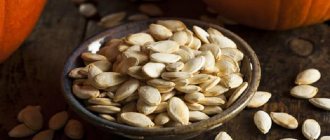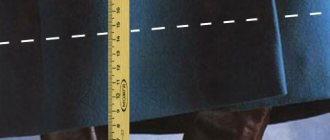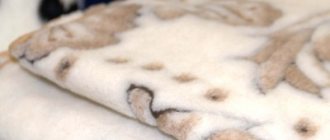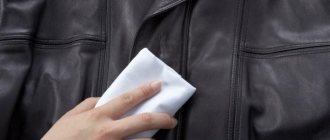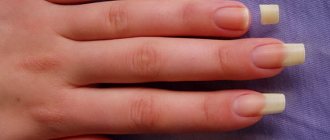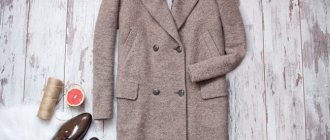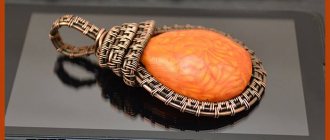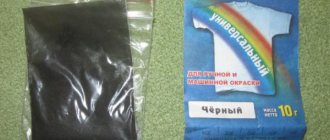Fashion and modern technology have made the coat a design item. A huge selection of artificial and natural materials from which this wardrobe item is sewn requires careful attention to the care of the product. If previously only drape fabric was used for tailoring, now the market offers models made of cashmere, leather, suede, velor, without, of course, leaving aside the classics of the genre. Any of these fabrics require specialized knowledge on how to iron a coat.
How to remove wrinkles and creases using an iron
Storing a coat for a long time without using it, especially if it hangs in a tightly packed closet, leads to the appearance of bruises, folds, and creases. In this form, the product loses its attractive appearance, and ironing becomes necessary. Before starting the process, you need to carefully study the information on how to properly iron a coat, located on the label, where the permissible temperature must be indicated. Some models are best dry cleaned.
Features of ironing at home
Is it actually possible to iron a coat? Some materials cannot be ironed in principle, but you can get rid of wrinkles at home. Suede is steamed in a vertical position - if there is no steam generator, you can do this with an iron, many of them are equipped with a “Steam boost” function. A leather coat will have to be steamed. It will take its original form if you place it in a bathroom filled with steam - after a while its surface will become smooth, all you have to do is dry it.
The quick method is not always reliable - you can iron corduroy, but only on the wrong side and on a soft surface, so as not to wrinkle the pile. The same principle applies to velor and velvet fabrics. If you run the iron along the front side, the pile will be smoothed out, and it is no longer possible to return it to its original form - the product will be hopelessly damaged. Synthetic fabrics can simply melt from hot temperatures.
Nuances of care
In conclusion, here are some tips to help you care for coats made from different types of fabric:
- Always store wool coats, especially those made from alpaca and cashmere, on hangers at home. Do not throw other things on it and even when visiting, ask for a separate hanger.
- Do not wear handbags with a long strap along with an alpaca coat to avoid creases and bald patches.
- Carefully straighten your drape coat before storing so that there are no creases on the hem, sleeves, or collar. This material is quite rough and therefore will be very difficult to smooth out.
And don’t forget that proper care of your favorite things will definitely extend their service life, and save you nerves and finances.
How do you like the article?
How to iron coats made from different types of fabric
As already mentioned, before you begin the actual ironing process, you need to familiarize yourself with the care recommendations. We are not talking about summer types of coats made of cotton fabrics. Everything is clear with them; they are stroked using standard methods. As for more serious options, for example, how to properly iron a warm coat at home, each type of textile has its own method. The use of ironing fabric is desirable in all cases, except for vertical steaming or ironing from the inside out through the lining. For ironing, you can use gauze, special fabric (sold in the same place where irons are sold), or an iron soleplate that does not leave lasses.
Note! The sleeves of any coat can only be ironed using a sleeve holder. If one is not available, a tightly rolled towel will replace it. Otherwise, the appearance of arrows is inevitable, which is completely unacceptable for a coat.
Coat made of drape or wool
Natural wool and drape are not only difficult to iron, they are also expensive, which is also a good incentive for careful treatment:
- If for some reason you have to iron without ironing, you need to stock up on a set of paper napkins to clean the soleplate of the iron, eliminating, if possible, the appearance of scorch marks.
- Such fabrics, due to their thickness, structure and properties, are difficult to iron, so the product must be slightly moistened.
- Ironing begins from the inside out, if the coat is single-layer, without lining, this will be enough, with the exception of the finishing of decorative elements (epaulets, cuffs, lapels, pockets, flaps), the inside of the pockets is turned inside out and ironed
- You need to iron the seams especially carefully using the steaming method.
- Woolen fabric may require processing on the front side, where the use of protection in the form of an iron is mandatory.
Important! During the ironing process, the iron should only be moved in one direction. If the wool or drape has a long pile, the correct care is to treat the surface with hot steam at a short distance.
Suede and corduroy product
Both options can be artificial or natural; the former react poorly to high temperatures. The problem of how to iron a coat made of such materials has a simple solution. It is best to use steaming in a vertical position. If ironing cannot be avoided, the coat is turned inside out and laid out on a softened surface - this will help avoid unsightly wrinkles in the pile.
Synthetic product
Synthetics melt very easily, so ironing should only be done at the low temperature indicated on the product label. If the tag has not been preserved, you can use the tip of the iron to try the fabric from the wrong side, where the lace or mark will not be noticeable. The use of an iron-on or oversole is also mandatory.
We recommend:
How to iron fitted sheets and other linens
Coat made of combined materials
In this case, the ironing process is divided into several stages. Each stage requires an appropriate approach, taking into account the characteristics of all types of textiles used in a particular model. The product, with or without filler, is turned inside out and ironed, then the front side is processed. Usually ironed in this order: back, front, sleeves, then decorative details made of contrasting fabric.
Attention! Sometimes it is recommended to treat the lining fabric last. The advice is fundamentally wrong - in this way, creases and folds reappear on the front side, which are much more difficult to straighten after ironing. Sometimes it is completely impossible to straighten them - no matter how you iron them, the crease lines will be visible in bright light.
Steaming
Steaming is the most gentle way to iron coats made of any material. It does not spoil the structure of the fabric, does not form shiny marks and is not capable of burning through the fabric. In addition, the steam is distributed evenly, which allows you to quickly complete the task and save time.
However, not everyone has a steamer at home, so you can use the following methods:
- Steaming with a regular iron. Hang the item vertically, pour water into the iron, set the minimum temperature, and turn on the “steam” mode. Without touching the sole of the iron to the fabric, steam over the folds, wrinkles and creases. Then leave the item to cool and only then put it in the closet, covering it with a plastic bag for things. Of course, this method will take a lot of time, but in the end you won't ruin the coat.
- Steaming in the bathroom. Pour hot water into a large container, hang the coat vertically over the rising steam and leave until the water cools. At the same time, do not forget to close the door tightly. If creases or folds remain, repeat the procedure. Then hang the product in a well-ventilated area until completely dry.
Nowadays there is a large selection of steam generators or steamers in stores. Therefore, in order to make your life easier and not spend money on dry cleaning, you can purchase the unit once and be satisfied with the result without putting in a lot of effort.
How to iron a coat without an iron
The absence of an iron does not mean that the problem of how to properly steam a coat made of certain types of materials (suede, leather, velvet or velor) has no solution. Is it possible to steam such a coat? It can almost always be refreshed and smoothed by hanging it in the bathroom filled with steam. After vertical steaming, the product should dry well. Only when dry can it be placed back into the wardrobe.
Tips for fixing small problems
Using simple techniques and small tricks, you can easily preserve the beauty of the product. The most correct method is the prevention of future problems, and the correct elimination of existing ones:
- Long-term storage of a coat implies its free presence in the wardrobe - placing it in a tightly packed closet is not the best option; it is better to find another place for it in the house.
- An effective method for eliminating “wrinkled” seams is ironing with an assistant. The collar or lapel is stretched and ironed through a damp cloth.
- If the fabric has stretched in some place, the method of “planting” the fabric is used. You can find out how to iron a coat in this case on special tailoring websites.
You can almost always return your coat to an attractive appearance on your own without overpaying for dry cleaning services. You just need to carefully follow the manufacturer's recommendations.
Rate this post
What types of curtains are there?
In order to understand how to iron curtains, you first need to know what they are. Most often, this characteristic refers to the material from which they are made. Each fabric has special care requirements, which relate not only to washing (its temperature conditions, the use of machine washing, etc.), but also to ironing. The use of certain fabrics for sewing curtains is dictated not only by interior fashion, but also by the functional purpose of the product.
You can divide curtains according to several criteria, for example:
- by method of application;
- design and shape (for example, vertical or horizontal, complex or simple, “bishop sleeve” or “hourglass”);
- materials.
According to application, curtains are distinguished:
- kitchen, including short window curtains;
- for rooms (living rooms, bedrooms, children's);
- stage;
- interior (zonal);
- for utility and utility rooms, for example, for a bathroom or gazebos;
- automobile;
- innovative (shading or insulating, for example, made of tarpaulin or other dense fabric).
By design, curtains can be distinguished:
- classic;
- curtains of simple and similar cut, including Italian, Austrian, London, Greek type curtains;
- roll;
- Roman curtains;
- thread;
- with lambrequins;
- fabric blinds (vertical and horizontal).
In addition, curtains can be distinguished by the method of fastening on the eaves, namely curtains with fabric loops, with ties, with a drawstring, with grommets, as well as curtains that are not attached to the eaves.
- natural fibers (cotton, linen, natural silk)
- artificial fibers.
The latter are produced industrially, and most often they are made with the addition of synthetic threads. Recently, housewives and interior designers have given preference to thread curtains, because all that needs to be done with such decor for window and door openings is to hang them in place slightly damp and shake them so that the threads hang evenly. These curtains do not require ironing, steaming or other methods. Wrinkle-resistant fibers just need to be washed with any detergent - and they will again delight their owners, creating comfort. It is noteworthy that the wide range of colors of such curtains allows them to be used both in kitchens and living rooms, as well as bedrooms, balconies and loggias.
Difficulties in care and ironing are also noted with polyester products, velvet and heavy curtains. But the most difficult to iron and care for are curtains that have lambrequins, tiered folds and complex designs made from any of the listed fabrics.
